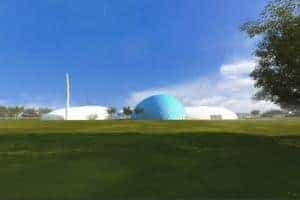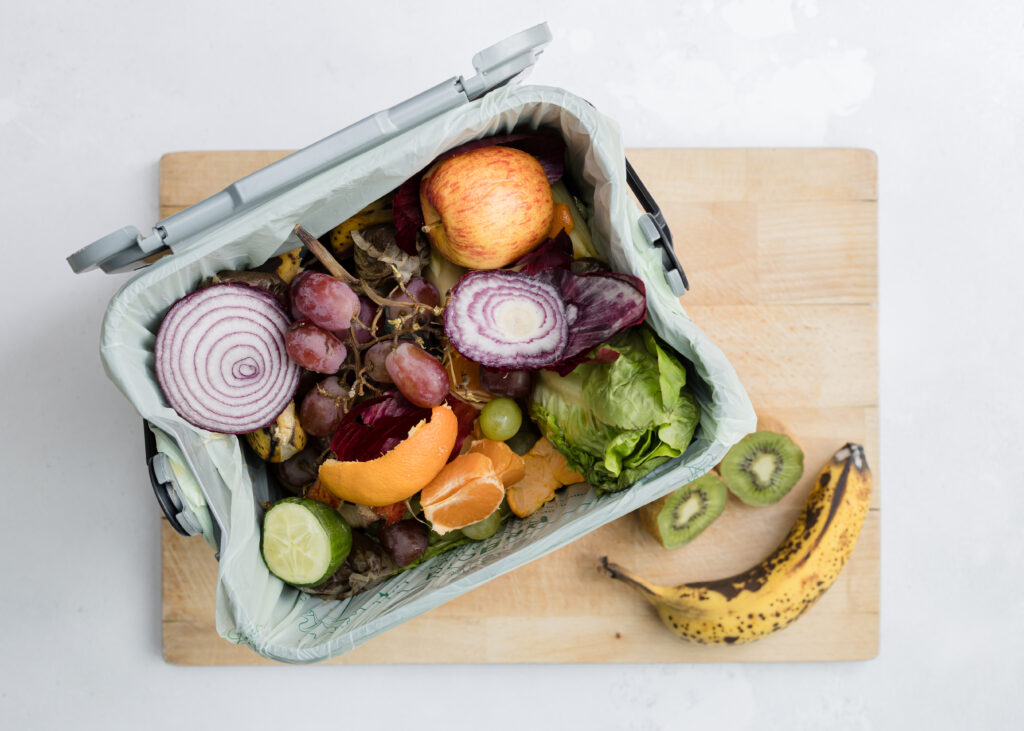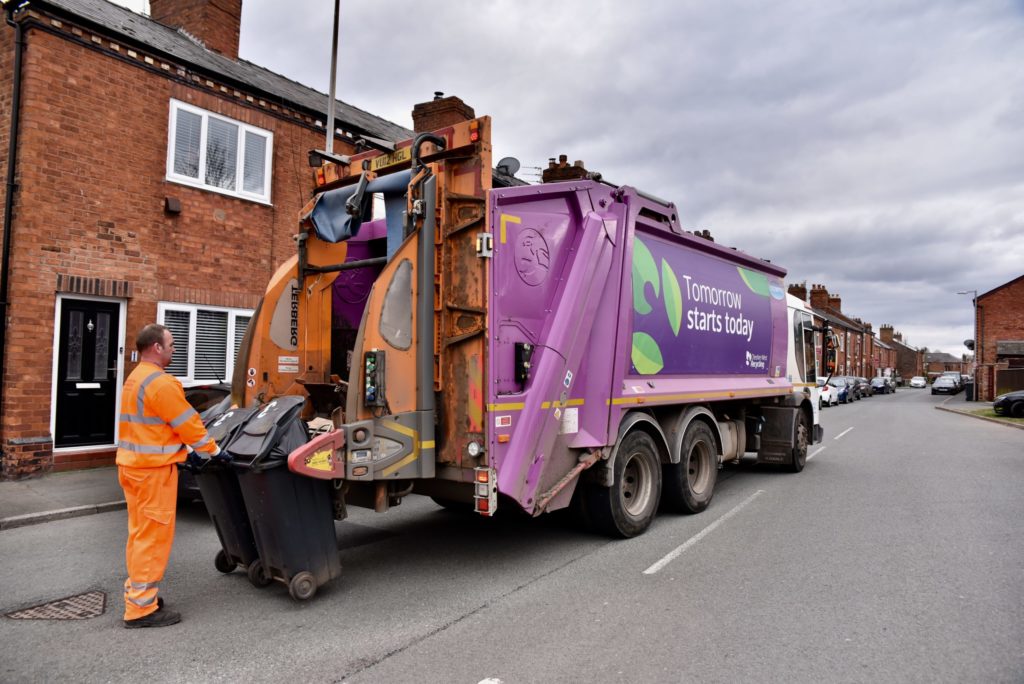In 2009 after two years of preliminary discussions the USA-based company Solena offered to join forces with British Airways (BA) in order to evaluate the possibility of developing a plant to produce liquid bio-jet fuels for BA from a range of feedstock sources.
The plant proposed would use a combination of new technology, a plasma arc gasification unit and an old established chemical processing system, the Fischer-Tropsch process. The syngas (synthetic gas), or Bio-SynGas in this case, generated by the plasma arc would be converted to a liquid fuel. A further advantage of this bio-jet fuel is that it has better combustion properties and lower pollution potential than its fossil fuel alternative when it is used by jet engines.
New technology links with old
The plasma arc system has been proposed for several years as a potential alternative energy recovery option for waste processing. Until recently, with lack of support and limited success, its development and use has not been regarded as viable. As with other alternative systems, such as several microwave, sterilisation and autoclave-based plants developed in the UK and overseas, there has been huge scepticism, especially regarding the energy balance of the whole process.
The main question for the plasma arc process was, could the total input of energy to reach the high temperatures required by a plasma arc, around 4,000-5,000oC, be generated internally by processing waste, let alone generate a surplus of energy? If a surplus were to be generated could it be used as heat, electricity or, in the case of the Solena/BA project, manufacture a liquid bio-jet fuel?
The advantage of plasma technology over more conventional gasification technologies is that 20-50% more of the carbon-based waste materials are broken down to ensure gasification of even the most intransigent carbon components. The gasification process releases a range of gaseous products but mainly carbon monoxide and hydrogen.
The Fischer-Tropsch process on the other hand is a long-standing technology originally developed by two German scientists in the 1920s. Subsequently this process was used by the Germans during WWII to convert some of their coal resources to liquid fuels. The technology was further developed by SASOL, the South African energy company, which ensured that South Africa could utilise its vast soft coal resources for conversion to liquid fuels to withstand international oil embargoes in the 1970s and 1980s. Even now the SASOL plant is in full production and produces jet fuel that is used by aircraft at Johannesburg airport.
The Solena Process
Solena is a worldwide company utilising biomass as a fuel source and has projects in Spain – Galicia and Cordoba – and the Czech Republic as well as its extensive portfolio in its home base in the USA. In Italy Solena also has interest in the conversion of specifically-grown algae species in an effort to create bio-fuels using the combination of plasma gasification and the Fischer-Tropsch process which is to be used in the BA bio-fuel project.
In 2009 Solena started construction of their first commercial scale bio-fuel plant for liquid bio-fuel at Gilroy, California. This plant is similar in size but the technology is different to the plant being proposed for the UK. No plasma technology is involved and the fuel generated will be utilised by road vehicles.
The advantage of the Solena plasma arc process is that it uses a metallic catalyst in order to spread the heat impact of the plasma arcs used in the gasification units to a greater processing area and thus convert more of the carbon based wastes to gases. Solena claims that only 5% of the energy content of the waste is required to gasify the waste in its latest processing system, thus leaving the energy surplus for a wide range of processes. The types of feedstock which can be processed can include a wide range of wastes left after initial recycling of municipal, commercial and industrial waste streams, such as contaminated paper and plastics, multi-layered and other plastics which cannot be recycled, tyre chips, food waste, crop and forestry residues.
The proposed Solena plasma arc system provides several productive outputs from the process: heat, electricity as well as the syngas, which can then be utilised to produce a liquid bio-fuel source. The 500,000 tpa plant can provide sufficient energy to process waste into renewable liquid bio-fuel energy resources but also yields 20MW of electrical power in addition to that required to operate the plant plus surplus heat energy that could be used for industrial process heat or perhaps district heating.
At full production the process should yield 1170 barrels a day of BioJetFuel and 630 blls day of bio-naphtha, which can also be used as a constituent of liquid fuel or as a chemical source. Even the small amounts of final residue from the process can be readily utilised as a construction product because the high temperature used in the plasma arc system yields an inert glass-like solid material, which also has the advantage of locking in within the vitrified matrix any non-organic contaminants in the waste.
For BA, this project provides a substantial opportunity to reduce its carbon footprint. Fuel usage generates 99% of its carbon footprint, a total of 17,583.853 tonnes CO2eq in 2008 from all BA's operations, and therefore its main environmental impact. Unless BA were to address the future sources of its fuel consumption then anything else would be largely irrelevant.
Location for the Bio-fuel Processing Plant

The plant will be a first for the UK and probably for Europe
Jeff Cooper, ISWA
Ideally for BA's purposes it would have been good to have the site of the proposed plant in close proximity to either BA's main hub, Heathrow airport or a supply feed point on the pipeline system supplying Heathrow. However, the possibility of utilising the Heathrow and wider west London area was precluded by the lack of suitably-sized sites.
The first priority therefore was to see whether there was a suitable site that could be found in southern England which could provide Solena with its ideal requirements: a site with at least 10ha of land, B2 (manufacturing production) planning approval and sufficient land surrounding the site without any nearby residential development to satisfy possible COMAH requirements. There were a number of other conditions in addition to adequate size, ideally with some scope for expansion, good access and transport links and not least potential local access to suitable feedstock supplies.
A consultancy company, ARCADIS, was employed by BA to search for suitable sites. Having found 80 sites within an area of South East England bounded by Bristol, Poole, Banbury and Suffolk initially this list was then progressively whittled down to only 20, although others were added later if identified in the main areas of search.
The Avonmouth/Bristol area was the second most popular for potential sites. Avonmouth has been the subject of several other applications for bio-waste energy recovery projects, including the proposed SITA Cyclamax plant which would have a capacity of 400,000 tpa mainly fuelled with commercial and industrial waste. The majority of the residual MSW generated by the 4 councils which make up the West of England Partnership: Bath and North East Somerset, Bristol City Council, North Somerset and South Gloucestershire, is going to be processed by a new MBT facility currently being constructed by New Earth Solutions.
The prime area of search was East London, already identified by a number of other companies for possible location of bio-fuel development, albeit for more traditional electricity and potentially heat resources rather than for a transportation fuel source. However, in contrast to the Avonmouth and Bristol area, there is potentially a greater amount of feedstock available from the surrounding area. Not only could this area link with most of Greater London but could include Essex county council, which is currently using PFI to contract for a mechanical-biological treatment (MBT) plant for converting its residual waste to SRF, and other feedstock sources in the East of England Region.
In addition, of the English regions London has both the greatest problem in meeting its national and EU targets for reducing its biodegradable municipal waste going to landfill but equally the greatest potential to supply suitable feedstock for a liquid bio-fuel plant.
Solving London's Waste Problem?
Despite the endeavours of successive local and regional administrations to increase recycling and waste recovery Greater London has always exported its excess waste to the surrounding counties.
In contrast to the previous administration, which considered that recycling could provide the main solution to meeting the challenge of the amount of waste going to landfill, the current Greater London administration is more open to a wider range of options. Therefore the recently published draft replacement London Plan seeks to ensure London's waste is managed within its boundaries by 2031 at the latest. The Solena/BA plant would provide a huge boost in meeting that target.
Within London there are still administrative structures, and often infrastructure, which has been inherited from the demise of the Greater London Council (GLC) in 1986. The 4 statutory waste authorities, although originally expected to be wound up quite quickly after 1986, still exist and cover 21 of the 33 London Boroughs. While the remaining 12 boroughs are responsible for their own waste disposal arrangements, some have voluntarily linked together to provide joint solutions, such as the 4 southern boroughs of Croydon, Kingston upon Thames, Merton and Sutton currently looking for a joint solution for their residual waste management through a PFI contract.
The East London Waste Authority (ELWA) has had a long-term arrangement for its waste management in place since 2002 with Shanks and the Western Riverside Waste Authority (WRWA) now has an agreement with Cory for transport of its waste down the river to its new Belvedere incinerator in Bexley. In the meantime Cory is transporting residual waste from the WRWA to the Mucking landfill site in Essex by barge. However, the two larger of the statutory authorities: North London Waste Authority (NLWA) and West London Waste Authority (WLWA) have yet to provide new long-term solutions for their waste disposal.
The NLWA has recently been reconstituted so that the 50:50 partnership with SITA (and its predecessors from 1986) that held joint equal control over LondonWaste, the company which operated the Edmonton incinerator and provided other waste treatment and disposal services, came back under the control of the NLWA.
Least advanced is the WLWA, taking in most of the land area occupied by Heathrow airport, although ironically Heathrow's waste is sent just over the border to the new Grundon Lakeside incinerator in Colnbrook. The WLWA handles half a million tonnes of residual MSW a year and there is almost an equal amount of waste recovered for materials recycling and composting.
There are also many private companies providing waste services in the East London area providing waste collection, transfer, treatment, reclamation and disposal operations.
Why the Solena Plant is Necessary
The project will be evaluating the four potential sites currently identified and the feedstock options with a decision being taken in September to go ahead if the current high price for oil remains at that level and forward contract prices are equally high. The Solena plant will cost a total of US$280m (£178m), excluding land acquisition costs, funded through equity capital and bank borrowings, although there is the expectation that grants and capital guarantees may be necessary to expedite the progress of the development to ensure it can start to be built in 2012 and become fully operational in 2014.
The plant will be a first for the UK and probably for Europe. It will provide a totally new way to convert carbon-rich wastes into a high value liquid transport bio-fuel. It will also provide a small degree of additional fuel security in the face of rapidly declining domestic resources of oil and natural gas.
If built, the Solena plant will show that Britain has both green technology and green jobs in line with the ambitions of the current Government and regional development agencies. In addition, it can help to meet the UK's commitments for renewable energy moving towards the exacting targets that the country is required to achieve by 2020 and beyond under both its international and EU obligations.












Subscribe for free